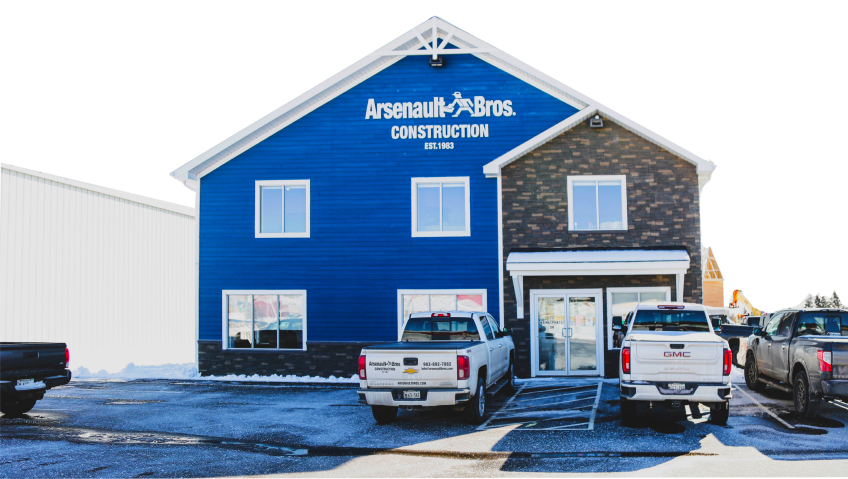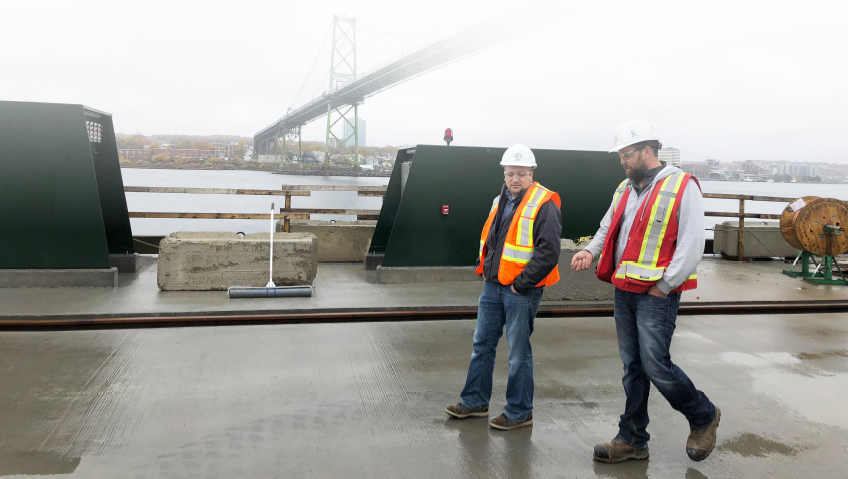Why should the Helmkamp Construction Company of East Alton, Illinois, serving southern Illinois and the metropolitan St. Louis, Missouri area, be the builder of choice for the repeat professional buyer of construction? The answer comes easy with this company.
From its base in southern Illinois, Helmkamp Construction provides professional solutions for industries including manufacturing, petroleum, chemical, power, and utilities; for buildings serving the commercial, educational, and financial sectors; and for life science facilities supporting agriculture, animal health, biomedical, healthcare, and pharmaceuticals.
Eighty percent of Helmkamp’s construction work is carried out within a two-hour driving radius of East Alton, which includes the St. Louis, MO metropolitan area. However, it has operated throughout the U.S. for clients to whom it had previously supplied construction services in Illinois or Missouri.
Currently, there’s a trend in the industry that’s seen general contractors becoming construction managers with everything being subcontracted. However, Helmkamp, which does some subcontracting but in industrial and critical infrastructure areas, self-performs a considerable amount of work, according to President and owner Rob Johnes, including complex foundations, structural steel, and material handling systems.
Building the American dream
It was the young Gilbert Helmkamp who brought the company to life. In 1935, at the age of 17, he leased a flatbed truck and hauled coal from Livingston and topsoil from the Mississippi Quarry, picking up a load on his way to school and delivering it to customers when school ended for the day.
Three years later, in 1938, he bought his own truck and started G. Helmkamp Excavating & Trucking Company. By 1940 he had four trucks and had signed long-term leases through to the end of the war with Standard Oil, and from there growth continued.
By the late 70s, with 300 employees and well over 100 pieces of equipment, his company was one of the largest excavating, trucking, and equipment rental companies in the area, executing projects that included bridges, roadways, golf courses, sewers, and industrial work.
In 1961, Helmkamp’s son-in-law, Byron Farrell, a civil engineering graduate from Purdue, came into the company, and in 1987, Helmkamp’s grandson, Brad Farrell, joined.
With founder Helmkamp’s passing, and with insurance costs skyrocketing in the early 1980s, Byron Farrell, the new president and owner, took the company in a different direction, selling off most of the equipment and rebranding as Helmkamp Construction Company.
This strategy set the company on the path it follows today, which is to serve the repeat professional buyer in the industrial, commercial, and life science sectors.
Powered by people
To learn more, we’re speaking with Rob Johnes. He’s been with Helmkamp for 25 years, beginning as an intern while he was a student at Southern Illinois University in Edwardsville. He entered full-time employment in August 1997 as a Project Engineer and worked his way up to Project Manager, Vice President, and then President in 2012, taking over from Brad Farrell.
“I was here for a long time,” he says, “and I expressed interest in purchasing the company as there was not a fourth-generation family member interested, so we did a long-term buyout deal which was completed in 2018. We’ve been able to run the company more as I had wanted to see it run when I was an employee. I wanted to see it more structured, and I wanted to be able to share success with employees.”
Adding structure to the company and putting management and divisional levels in place gave employees better growth opportunities inside the company rather than outside. He considers this “one of our more important results in the last four years, and we are on that path now, going forward.”
He believes there is a direct correlation between a successful business and the people who work for it. “You have to have good people to get repeat business,” he says. “Clients don’t want to see a new face every time they come in, so that’s why I think it’s important to run a company as if it were an employee-owned company,” he shares.
“It’s about hiring the right people, teaching them to engage with clients, letting them know that they can do more than they think they can, and then giving them the freedom to run a project without micromanaging it.”
Helmkamp has an enviable record of zero recordable accidents in 2021 – something that Johnes says clients demand. “We don’t do any open public work, but we do a lot of work for large corporations which value quality and safety. We have a full-time safety director who does a great job, but really the program depends on getting the buy-in from our folks out in the field,” he explains.
“Construction is a dangerous job. It takes a lot of effort to stay safe and we partner with our workers to watch out for each other’s safety. The rubber meets the road in the field – that’s where we have to have policies and procedures to meet requirements, but at the end of the day safety is about everybody looking out for everybody else and having the authority to stop another employee from doing something they think is unsafe. That kind of thinking has brought us a good long history of success.”
Finding success – and sharing it
A company culture that promotes internal growth, values safety, and trusts employees, combined with generous benefits and a new fitness center at corporate headquarters, has resulted in Helmkamp being named in the St. Louis Journal’s “Best Places to Work” list, and its “Top Workplace” list by the St. Louis Post-Dispatch.
Johnes says that he also wanted to share the company’s success with the larger community through charitable giving, and so, in his first year of ownership and on the company’s 80th anniversary, Helmkamp donated $80,000 to various community groups.
The following year, the Helmkamp Foundation was set up. It is a charitable foundation funded by a portion of company profits and overseen by a group of volunteer employees who distribute it to charities operating in the communities where employees live and work. “We get requests for donations, and we choose three charities per year and set a target of $10,000 per month to donate, and if required, also bring some construction expertise to bear,” Johnes says.
Working for the client
Johnes believes that integrity and pre-construction services go hand-in-hand and produce results that are in the client’s best interests, and, although not necessarily in the company’s financial interest in the short term, bring long-term results.
He shares a story of a particular job for which Helmkamp interviewed but didn’t get, “because when they told us their budget, I said I think it’s going to cost at least twice that, and you are setting yourself up for disappointment.”
Knowing the job couldn’t be done for that figure, Johnes walked away, and another contractor accepted it. When the project was finished the cost was close to what Johnes had anticipated. And when it came time for that company to begin another project, he says, who did they call? Not the contractor who had agreed to the low price, but Helmkamp, because they knew they would get an honest answer.
Johnes says that on another occasion he was asked to upgrade an auditorium with an addition but after inquiring into why the addition was wanted, realized that the issues the owner was having could be resolved by structural and acoustical modifications. This meant a substantial saving for the owner and a smaller margin for Helmkamp. It was a revelation to the owner that a construction company would want to save the client money through value engineering.
“That’s how relationships are built, by trust and integrity, and a lot of that happens in the pre-construction phase when you ask what the client’s goals are. Sometimes, too quickly, they respond with, ‘We want a new building,’ but that’s not a goal. The goal was to improve the acoustics, as microphones were picking up the HVAC sound during recording events in the theatre, and so that’s what we did,” he says.
“In the pre-construction phase, we can help clients by offering real solutions, rather than having a typical pre-con situation where they give me a drawing and I give them a price. By being aware of the intent of the project we can add value,” he explains.
“What happens too often is that clients bring the contractor in after the plans are completed, and say, ‘budget this.’ Then after construction begins, they find they are over budget, but it’s too late, we can’t do value engineering at that point, only cut the budget – substituting carpet for tile, for example – but that’s not adding value.”
Another area where pre-construction investigation is crucial is within the parameters of building safety, especially in heavy industrial work.
“Workers may have to access a valve or instruments in a hard-to-reach area, and after the owner explains how maintenance workers have to get into that area twice a week, we’ll bring in an engineer before construction begins to design safe access platforms.”
New life
Even though restoration is not the team’s primary focus, when client Principia College, in Elsah, IL, for whom Helmkamp had done some new builds as well as restoration, asked for help in turning the Morey Field House, a combination gymnasium/auditorium, into a performing arts facility, they said yes.
Designed in 1937 by Bernard Maybeck, a renowned architect who worked mainly in the San Francisco area, it was declared a National Historic Landmark in 1993 and placed on the National Registrar of Historic Places. But as Johnes tells us, it was no longer serving the purpose for which it was designed and had stood empty for at least 10 years, falling into disrepair. “The question became, how do we breathe new life into this historic building? Architect John C. Guenter came up with some wonderful ideas and it was really interesting for us to be part of it coming together.”
The project involved renovating the existing 16,000 square foot gymnasium/auditorium into a performance arts center complete with stage, orchestra pit, sound booth, rehearsal area, dressing rooms, audience seating, ADA accessible lift, restrooms, and a dance studio, while retaining its historic features.
In an in-depth description of the work involved, Jen Jackson, Director of Marketing, notes the many challenges Helmkamp dealt with, starting with bringing a building constructed in the 1930s up to code and adding wheelchair access.
Helmkamp also “undertook the effort to preserve the history of the building by restoring the exterior finishes, replacing the slate roof, replacing and repairing existing copper elements, replacing the existing damaged glass skylights with glass sourced from historical salvage yards in Pennsylvania, re-building two curved wooden staircases with reclaimed wood from another staircase and restoring the existing exterior light fixtures,” she says.
But that work almost looks easy, compared with the problem-solving involved in building a new structure inside an existing structure. What Helmkamp did was “raise the roof on the north end to get equipment and material in and out, including an excavator and skid tier, which it used to saw-cut through layers to concrete to dig out an orchestra pit.”
Besides removing the original floor and digging out the orchestra pit and installing a mechanical lift for the orchestra, Helmkamp constructed a steel and concrete stadium seating structure, with video, sound, and light control booths, two stories of catwalks above the stage for rigging and systems access, and a 700 square foot addition with stairs and wheelchair lifts.
“The steep slope of the roof was another challenge and safety concern for installing the steel structure and smoke vents,” says Jackson, “which Helmkamp executed by fabricating the structural steel frame on the ground, and attaching the vents to it, minimizing the length of time and risk to construction workers suspended from the roof.”
Concerning the ingenious installation of mechanical, electrical, and HVAC systems to minimize visual and auditory distraction, Jackson says, “their collaborative efforts during the design and pre-construction phase achieved several project goals of providing state-of-the-art systems that were flexible for multiple occupancy and performance situations all while having a minimal visual and acoustic impact.”
This major historic renovation project earned Helmkamp an AGC Keystone Award in the category of Building Construction Projects between $5 and $10 million; an Acanthus Award from the AIA Chicago Chapter for Excellence in Renovation & Adaptive Reuse for Architect John Guenter; and the project also received an Honor Award in the Craftsmanship Category at the 2021 AIA St. Louis Design Awards for the roof replacement.
Principia Facilities Director Paul Lehr says, “Helmkamp has been a wonderful construction partner and this project is a testament to that partnership.”
Staying constant
Whether it’s working for large refineries, power plants, and chemical plants, where standards are strict and the number of contractors who can get in is limited, or whether it’s ‘breathing new life’ into a historic building,” Helmkamp’s mission remains constant, says Johnes.
“Focusing on our clients, building projects that we’re proud of, and sharing success with our employees is what it’s all about.”






